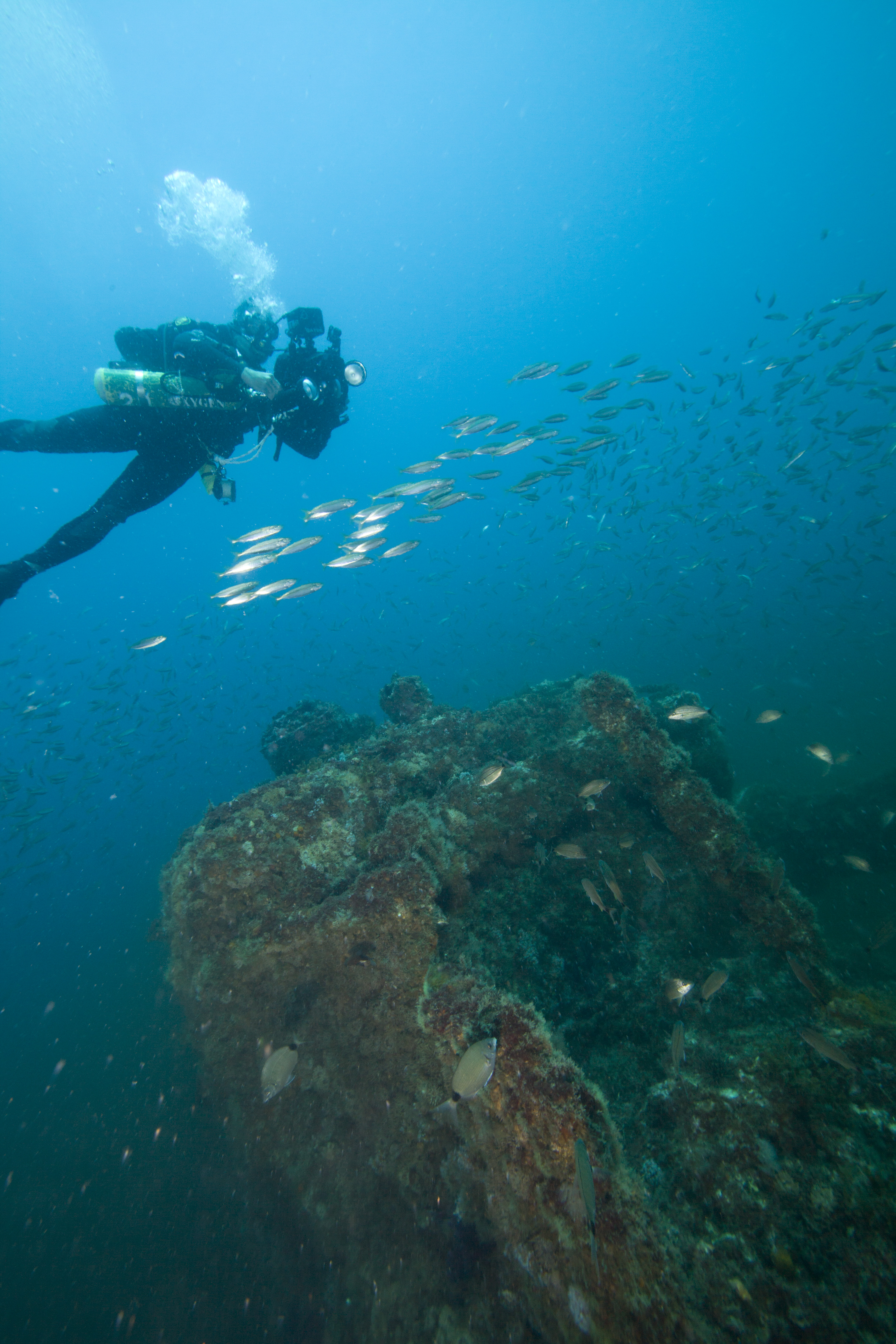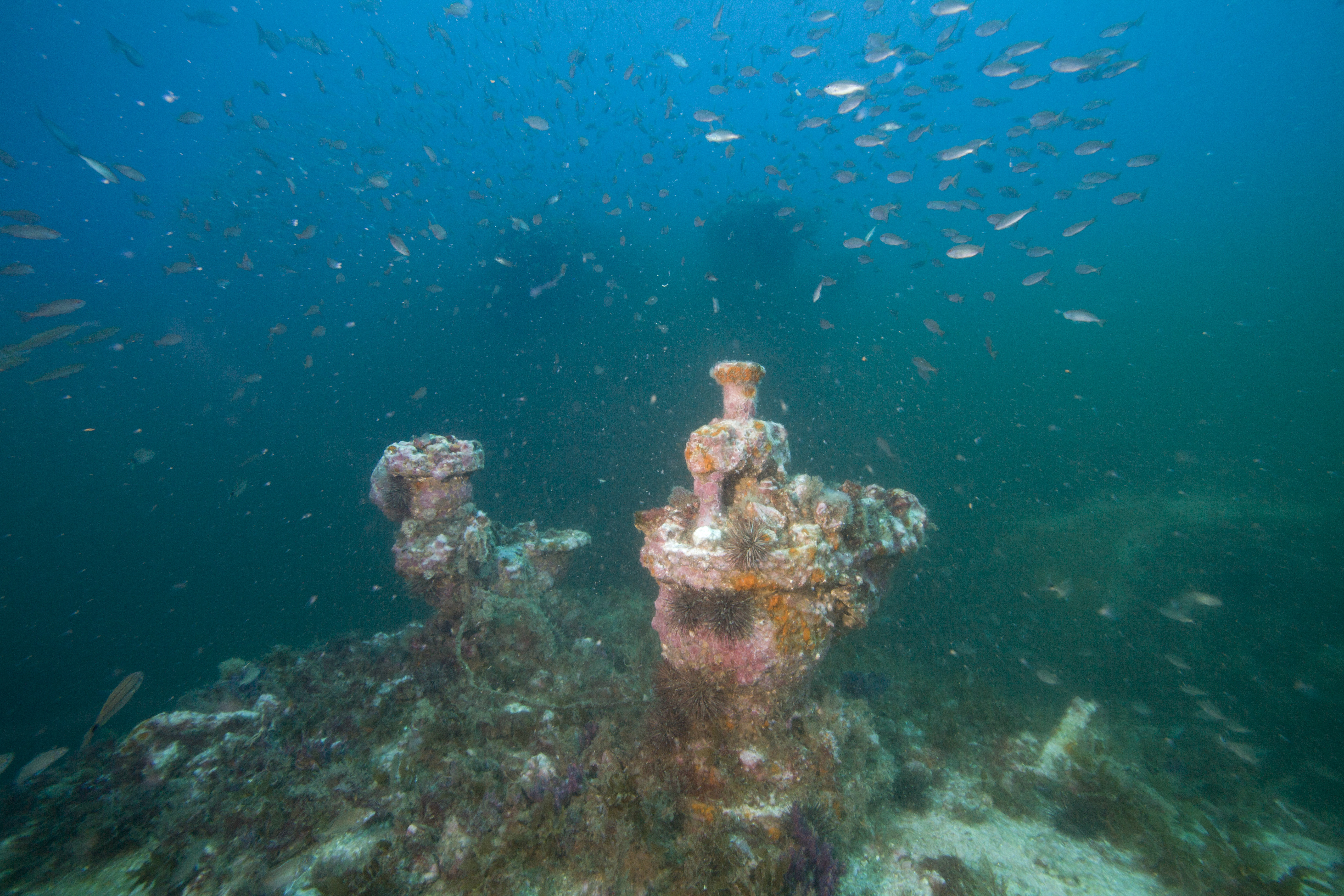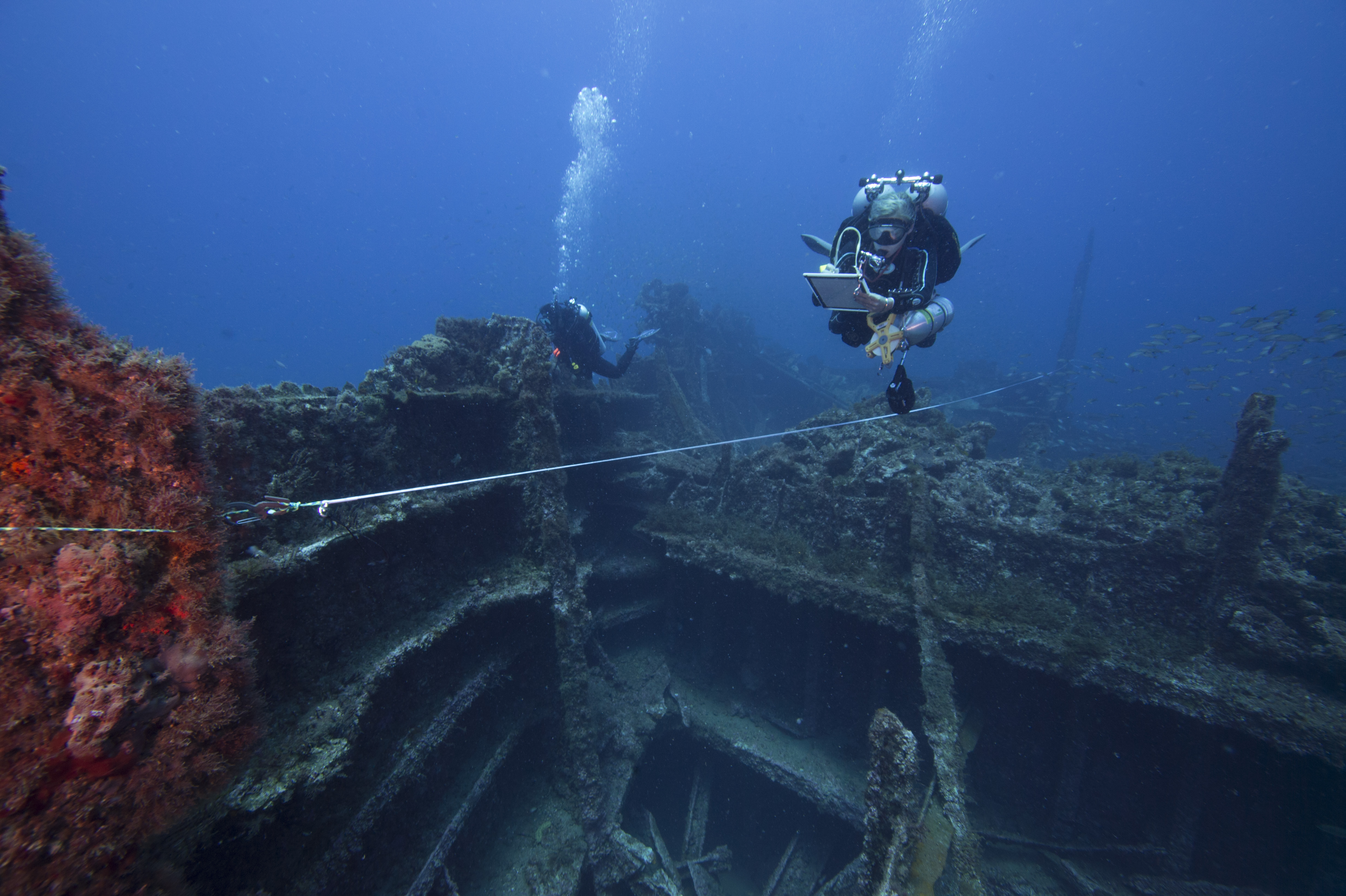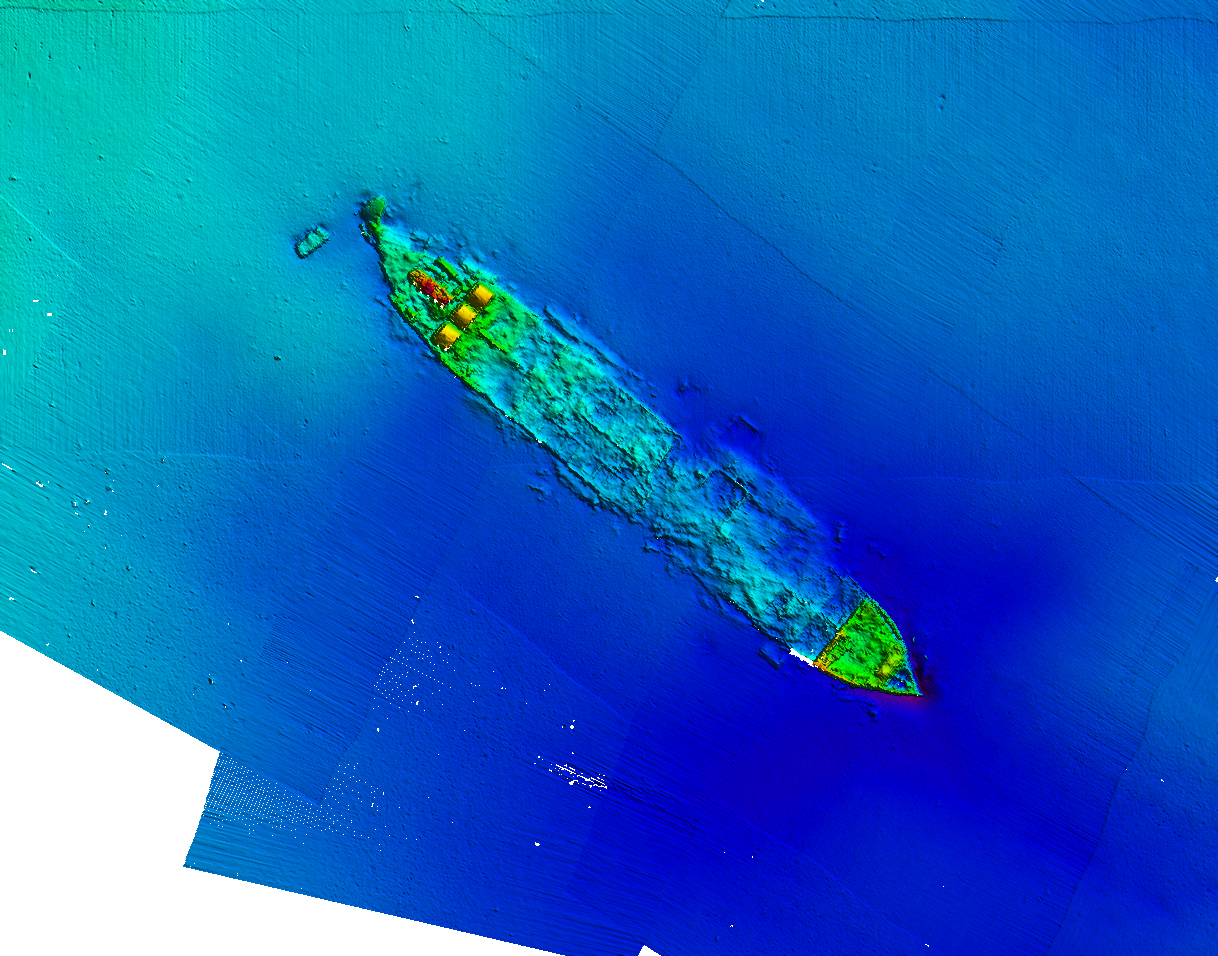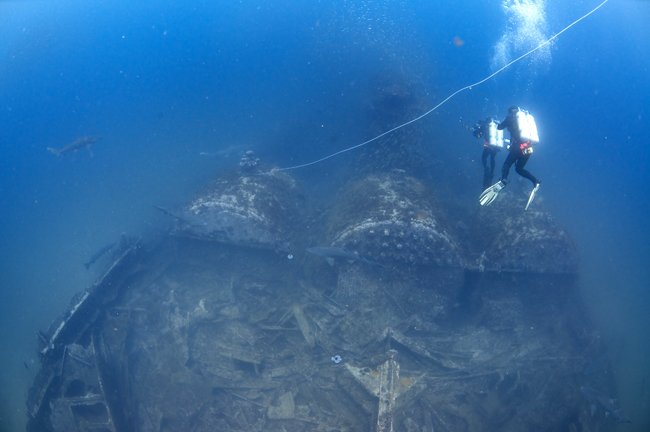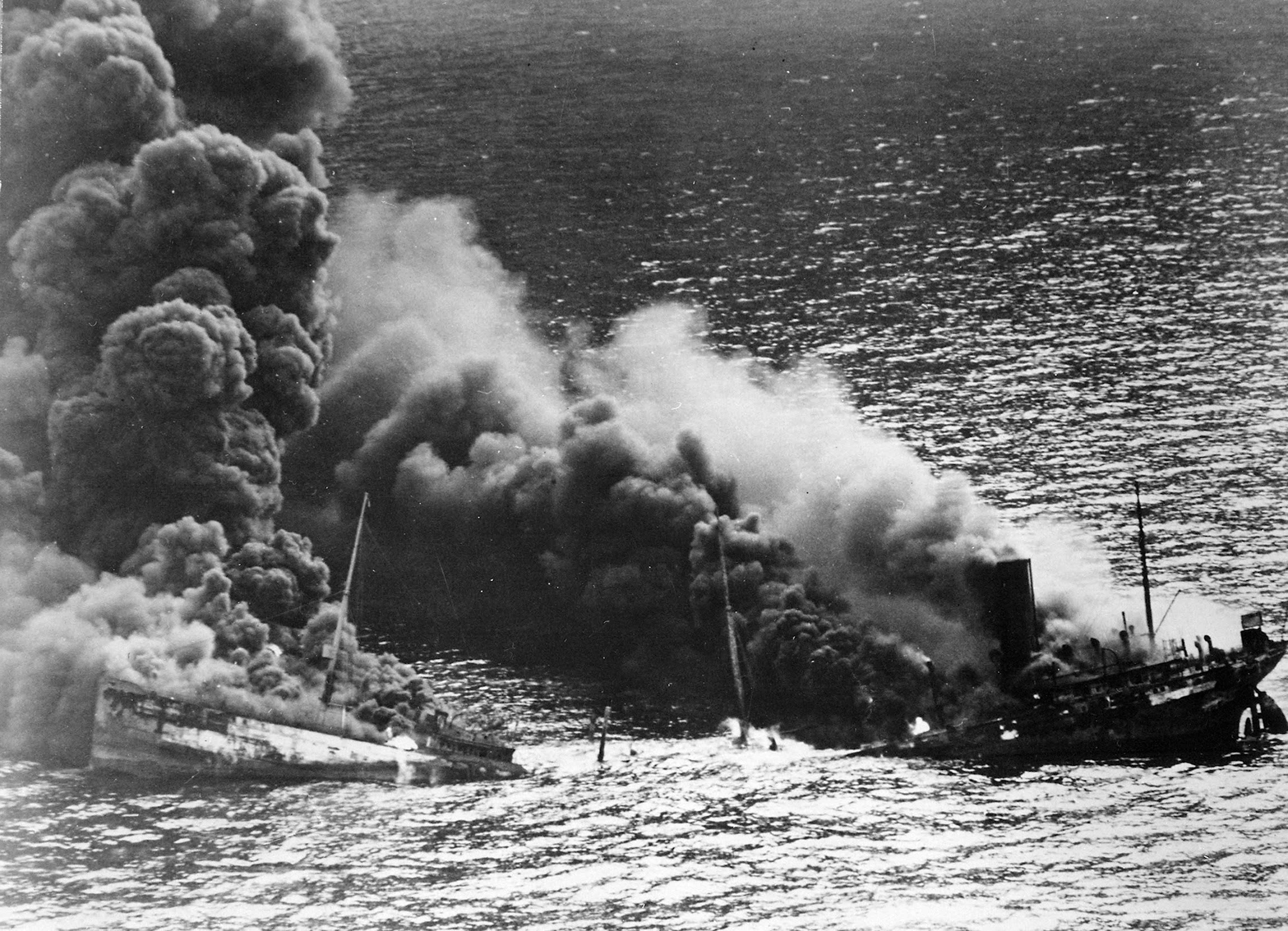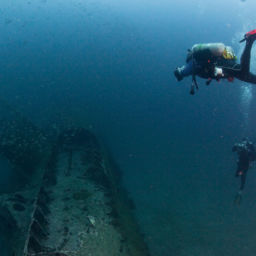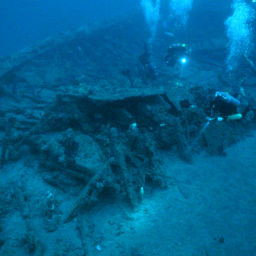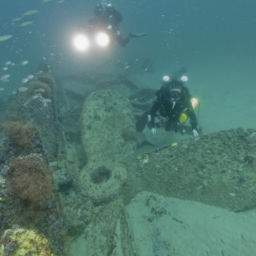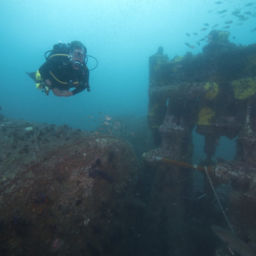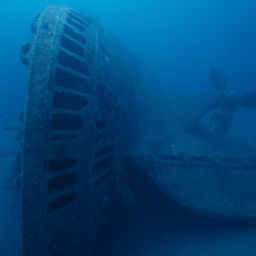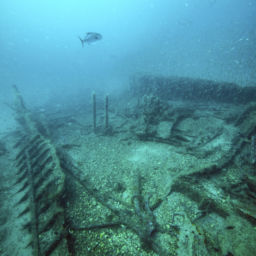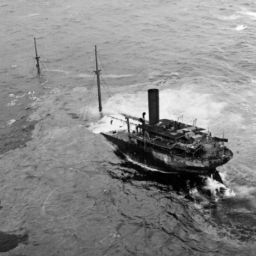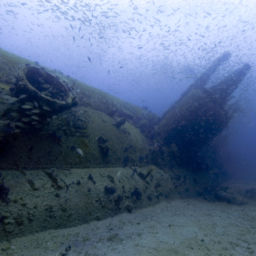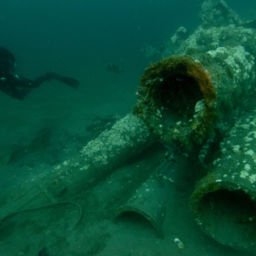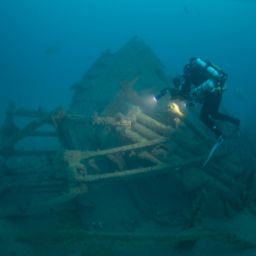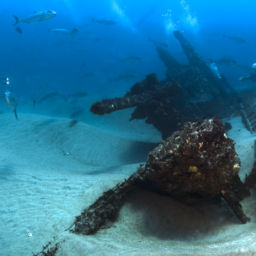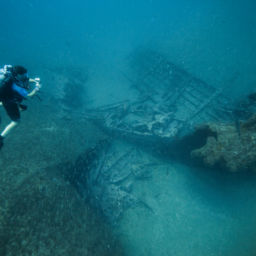North Carolina’s Outer Banks are beautiful and treacherous. Hidden shoals and dangerous currents have sunk thousands of vessels and claimed countless mariners throughout the centuries. These tragedies have earned the area the nickname “the Graveyard of the Atlantic.”
During World War II, war raged off the coast of North Carolina. The Battle of the Atlantic, the longest continuous military campaign of the war, came to its shores from January to July 1942. During that time, dozens of Allied warships, merchant vessels, and German U-boats were sent to the bottom. Today, divers can see wrecks dating from the Colonial era through both world wars. Monitor National Marine Sanctuary and its partners have surveyed and documented many of them. World War II-era Dixie Arrow is one of the most exceptional dive-able shipwrecks within the Graveyard of the Atlantic. Sunk by a U-boat in 1942, the 468-foot oil tanker now rests in 90 feet (27 m) of water, 15 miles (24 km) south of the Hatteras Inlet.
The history of the Dixie Arrow
Built in 1921, Dixie Arrow spent two decades ferrying oil along the North Atlantic coast of the United States, the Gulf of Mexico, and the Pacific Coast. As World War II neared American shores, Dixie Arrow transported petroleum through areas vulnerable to German U-boats.
On March 26, 1942, Dixie Arrow became a casualty of the Battle of the Atlantic. Lurking at dawn near the Diamond Shoals Light Buoy, the German submarine U-71 fired two torpedoes, taking the Dixie Arrow crew by surprise. Flames engulfed the ship in less than a minute. Of the 33-man crew, only 22 survived.
Seventy-five years later, Dixie Arrow remains mostly intact, making for a remarkable dive site. The ship rests upright on its keel. Portions of the bow rise 30 feet (9 m) from the sea floor. At amidships, Dixie Arrow’s remains have largely fallen inside the hull. The tanker’s keel is visible in areas where the rest of the hull components are missing.
At the ship’s stern, divers can still see the boilers and the triple-expansion steam engine, the wreck’s most impressive feature. On both sides of the engine, scattered pipes, valves, and fittings remain. Interested divers can also try to spot the partially-buried propeller.
Monitor National Marine Sanctuary
Since establishment as the United States’ first national marine sanctuary in 1975, Monitor National Marine Sanctuary has protected the historic wreck of the USS Monitor, a Civil-War-era ironclad. The sanctuary and its partners have since surveyed many other wrecks to better understand the region’s maritime history. Dive slates, site plans, and histories of the documented ships — including Dixie Arrow — are available on the sanctuary’s website.
In 2016, Monitor National Marine Sanctuary proposed a boundary expansion. This would protect a nationally-significant collection of shipwrecks that currently has little-to-no legal protection. The proposed sanctuary would include wrecks dating from the Age of Exploration, the Revolutionary War, the Civil War, and perhaps most prominently, World War II’s Battle of the Atlantic, like Dixie Arrow. The sanctuary’s expansion would honor our nation’s rich maritime history while preserving these unique sites for future generations.
Visit the NOAA Office of National Marine Sanctuaries to learn about diving and marine sanctuaries’ maritime heritage.


